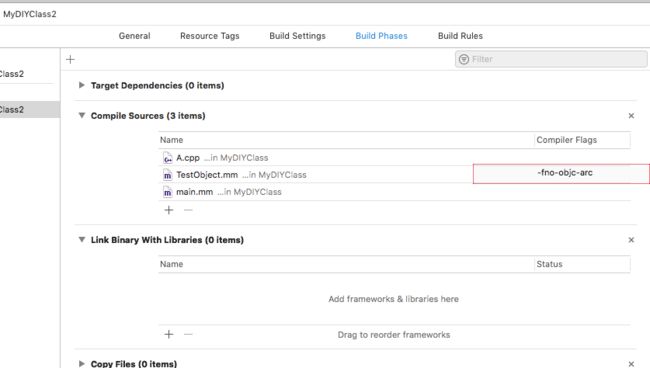本系列博客是本人的源码阅读笔记,如果有 iOS 开发者在看 runtime 的,欢迎大家多多交流。为了方便讨论,本人新建了一个微信群(iOS技术讨论群),想要加入的,请添加本人微信:zhujinhui207407,【加我前请备注:ios 】,本人博客http://www.kyson.cn 也在不停的更新中,欢迎一起讨论
本文完整版详见笔者小专栏:https://xiaozhuanlan.com/runtime
分析
之前的
iOS开发之 runtime(28) :获取每个 class 信息(1)
里面,我们写过如下一些代码:
#import
#include
#include
struct class_ro_t1 {
uint32_t flags;
uint32_t instanceStart;
uint32_t instanceSize;
#ifdef __LP64__
uint32_t reserved;
#endif
const uint8_t * ivarLayout;
const char * name;
};
struct class_rw_t1 {
// Be warned that Symbolication knows the layout of this structure.
uint32_t flags;
uint32_t version;
const class_ro_t1 *ro;
Class firstSubclass;
Class nextSiblingClass;
char *demangledName;
};
#if !__LP64__
#define FAST_DATA_MASK 0xfffffffcUL
#elif 1
#define FAST_DATA_MASK 0x00007ffffffffff8UL
#else
#define FAST_DATA_MASK 0x00007ffffffffff8UL
#endif
struct class_data_bits_t {
// Values are the FAST_ flags above.
uintptr_t bits;
private:
bool getBit(uintptr_t bit)
{
return bits & bit;
}
public:
class_rw_t1* data() {
return (class_rw_t1 *)(bits & FAST_DATA_MASK);
}
};
#if __LP64__
typedef uint32_t mask_t; // x86_64 & arm64 asm are less efficient with 16-bits
#else
typedef uint16_t mask_t;
#endif
struct cache_t1 {
struct bucket_t *_buckets;
mask_t _mask;
mask_t _occupied;
public:
struct bucket_t *buckets();
mask_t mask();
mask_t occupied();
void incrementOccupied();
void setBucketsAndMask(struct bucket_t *newBuckets, mask_t newMask);
void initializeToEmpty();
mask_t capacity();
bool isConstantEmptyCache();
bool canBeFreed();
static size_t bytesForCapacity(uint32_t cap);
static struct bucket_t * endMarker(struct bucket_t *b, uint32_t cap);
void expand();
void reallocate(mask_t oldCapacity, mask_t newCapacity);
// struct bucket_t * find(cache_key_t key, id receiver);
//
static void bad_cache(id receiver, SEL sel, Class isa) __attribute__((noreturn));
};
struct objc_class1 : objc_object {
// Class ISA;
Class superclass;
cache_t1 cache; // formerly cache pointer and vtable
class_data_bits_t bits; // class_rw_t * plus custom rr/alloc flags
class_rw_t1 *data() {
return bits.data();
}
const char *mangledName() {
return ((const class_ro_t1 *)data())->name;
}
const char *demangledName(bool realize = false);
const char *nameForLogging();
};
typedef struct objc_class1 *Class1;
typedef struct classref * classref_t;
#ifndef __LP64__
#define mach_header mach_header
#else
#define mach_header mach_header_64
#endif
const struct mach_header *machHeader = NULL;
static NSString *configuration = @"";
int main()
{
unsigned long byteCount = 0;
if (machHeader == NULL)
{
Dl_info info;
dladdr((__bridge const void *)(configuration), &info);
machHeader = (struct mach_header_64*)info.dli_fbase;
}
uintptr_t* data = (uintptr_t *) getsectiondata(machHeader, "__DATA", "__objc_classlist", &byteCount);
NSUInteger counter = byteCount/sizeof(void*);
for(NSUInteger idx = 0; idx < counter; ++idx)
{
Class1 cls =(Class1)( data[idx]);
NSLog(@"class:%s",cls->mangledName());
}
return 0;
}
这些代码笔者也放到 github 中给大家参考了:
https://github.com/zjh171/RuntimeSample/tree/master/MyDIYClass
面对上面一些代码,相信大部分朋友结合笔者之前的文章应该能看懂的,但如果您仍有疑问的,本文就给大家再次深入分析一下以上代码的作用,并做一些 Demo 以便大家更深的理解。
分析
其实以上代码很简单,分两部分,
第一部分是一些结构体的声明,笔者在所有的结构体后面都加了 1 这个数字,用于和系统的区分。这一这么说,笔者声明的这些结构体,除了名字,其他都和系统的一模一样。
第二部分是 main 函数,熟悉的朋友也很容易理解,无非是从 section 为 __objc_classlist 内取出所有的类,然后调用其 mangledName 方法。只是 mangledName 方法比较有意思:
const char *mangledName() {
return ((const class_ro_t1 *)data())->name;
}
也就是说,他获取的是 data() 方法 中的 name 字段,继续,我们看一下 data 方法来自何处:
data 方法是获取的结构体 bits 中的 name 字段。而且 bits & FAST_DATA_MASK 获取的居然是结构体 class_ro_t1 !相信读者已经开始欢呼了,因为说明了以下几点:
- 一个完整的类其实有 readonly 结构体 和 readwrite 结构体构成
- readonly 通过获取 bits & FAST_DATA_MASK 获得 readwrite 部分。
实战
实战部分的代码在这里:
https://github.com/zjh171/RuntimeSample/tree/master/MyDIYClass/MyDIYClass2
完整的代码不贴了,这里只贴几个不一样的部分:
for(NSUInteger idx = 0; idx < counter; ++idx)
{
Class1 cls =(Class1)( data[idx]);
NSLog(@"class:%s \n",cls->mangledName1());
bool isRoot = (cls->data()->flags & RO_ROOT);
if (isRoot) {
printf("is root \n");
} else {
printf("is not root \n");
Class1 superClass = cls->superclass;
printf("superClass:%s \n",superClass->mangledName1());
}
bool isRealized = cls->data()->flags & RW_REALIZED;
if (isRealized) {
printf("is isRealized\n");
} else {
printf("is not Realized\n");
}
bool isARC = cls->data()->flags & RO_IS_ARC;
if (isARC) {
printf("is arc\n");
} else {
printf("is not arc\n");
}
bool loadMethodHasCalled = cls->data()->flags & RW_LOADED;
if (loadMethodHasCalled) {
printf("loadMethod Has Called \n");
} else {
printf("loadMethod has not Called \n");
}
bool hasCXXCtor = cls->data()->flags & RO_HAS_CXX_STRUCTORS;
if (hasCXXCtor) {
printf(" Has HAS_CXX_CTOR \n");
} else {
printf(" has not HAS_CXX_CTOR \n");
}
bool hasWeakWithoutARC = cls->data()->flags & RO_HAS_WEAK_WITHOUT_ARC;
if (hasWeakWithoutARC) {
printf(" Has RO_HAS_WEAK_WITHOUT_ARC \n");
} else {
printf(" has not RO_HAS_WEAK_WITHOUT_ARC \n");
}
}
这里几个例子都是从 readwrite 里取出的数据来和一些常数进行 & 操作从而判断是否为真/假,甚至从里面获取某些数据。 关于 & 操作这里不多做介绍了,相信经常读笔者专栏的朋友应该很熟悉了。
另外,笔者的测试类代码如下:
class A
{
public:
//默认构造函数
A()
{
num=1001;
age=18;
}
//初始化构造函数
A(int n,int a):num(n),age(a){}
private:
int num;
int age;
};
@interface TestObject : NSObject {
// __weak NSObject *propertyA;
// A a;
}
这里给大家打印出结果:
is not root
superClass:
is not Realized
is not arc
loadMethod has not Called
has not HAS_CXX_CTOR
has not RO_HAS_WEAK_WITHOUT_ARC
Program ended with exit code: 0
这里我们一个一个作解释:
- 很显然,只要不是 NSObject ,那肯定不是 root class
- super class 获取不多,暂时不知道为什么
- 从上几篇文章中我们可知,刚从 section 里取出来的数据肯定是 not Realized
- 未使用 ARC,因为笔者做了如下设置:
load 方法是否存在。笔者做了个实验,如果在 TestObject 中 添加 load 方法,那就 loadMethod has Called,否则 loadMethod has not Called
判断是否有 C++ 构造函数。为了证明这个值,笔者在头文件添加了一个类 A,后来笔者做了实验,如果 调用了 A 里面的方法,或者在 TestObject 中声明了 A 对象,则这个结果会变成 has HAS_CXX_CTOR
用于判断,在非 ARC 的情况下,有没有使用 ARC 的特性,比如笔者注释的
__weak NSObject *propertyA;
使用的话就是 true,否则 false
注意
注意!注意!特别注意!
如果前面我们写了 load 方法,会影响后面所有的结果,这是为什么呢?笔者后面的文章会给大家解释,欢迎大家继续关注笔者博客。
总结
笔者在写博客的过程中也经常有豁然开朗的感觉,也许这就是 runtime 的魅力吧。有人疑问笔者,做这个 runtime 分析有什么用,笔者付之一笑。因为 runtime 中真的有太多可以提升你开发能力的东西,让你网上层帮你的业务代码更少 bug,更优秀设计;往下层,提升你对整个 iOS 系统有更深的理解。

